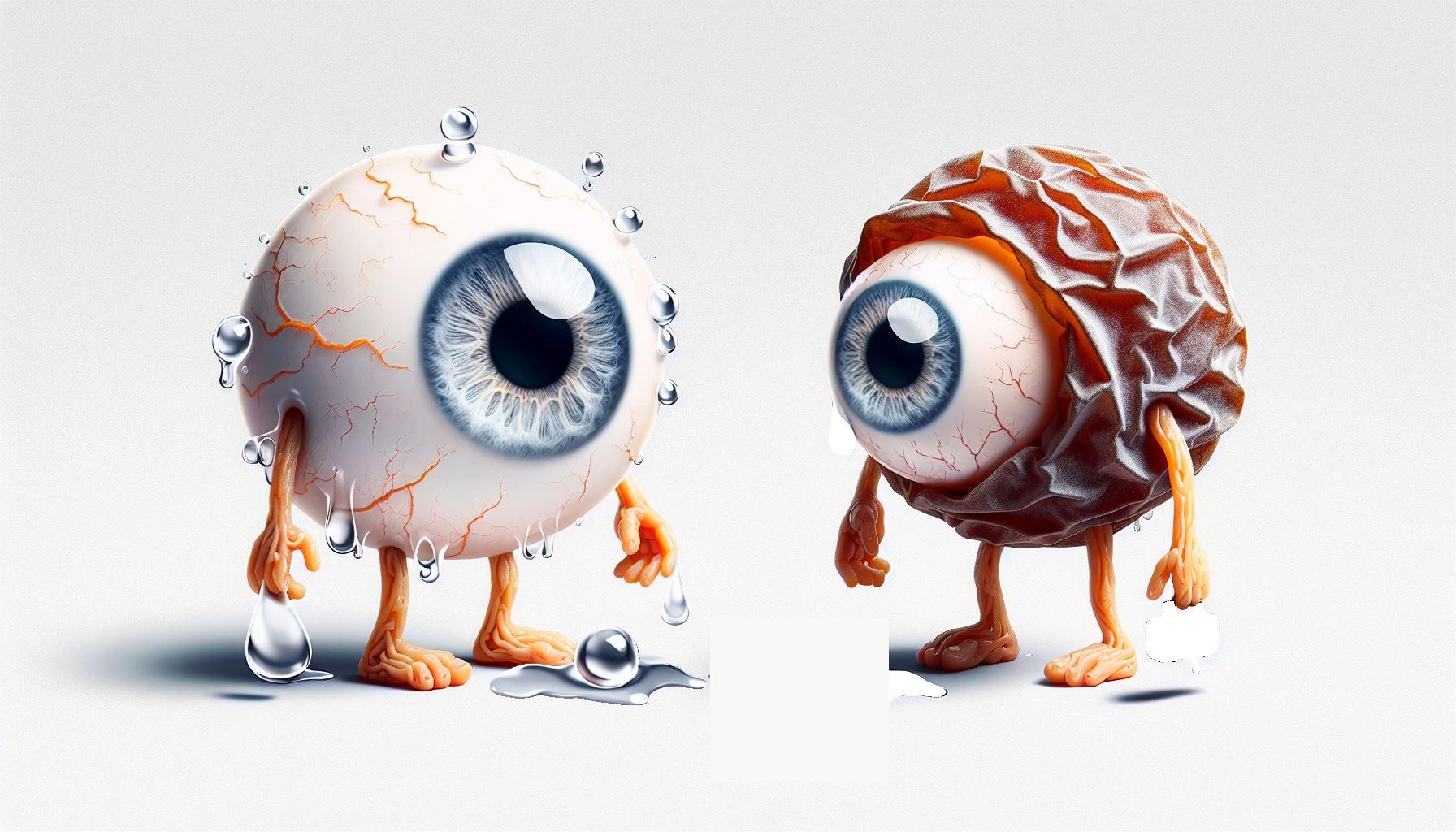
Age-related macular degeneration (AMD) is a common eye condition and a leading cause of vision loss among people aged 50 and older. It causes damage to the macula, a small spot near the center of the retina and the part of the eye needed for sharp, central vision. AMD by itself does not lead to complete blindness, with vision loss typically occurring in the central part of the visual field. There are two main types of AMD: “wet” and “dry.” Understanding the differences between these two forms is crucial for early detection and treatment.
Dry Macular Degeneration
Dry AMD is the more prevalent form of the condition, accounting for approximately 90% of cases. It is characterized by the presence of drusen, which are yellow deposits beneath the retina. Early stages of dry AMD usually start without symptoms. As the condition progresses, it can cause a gradual blurring of central vision in the affected eye. Over time, as more drusen develop and grow, they can lead to a dimming or distortion of vision that people find most noticeable when they read. In the advanced stages, there is also a thinning of the light-sensitive layer of cells in the macula leading to atrophy, or tissue death, which can cause a blind spot in the middle of the visual field.
The progression of dry AMD can be slow and many people can live with the condition for years without experiencing significant vision loss. However, there is currently no cure for dry AMD, and any vision loss that has occurred cannot be restored. But certain high-dose formulations of antioxidants and minerals can slow the progression of the disease in some people.
Wet Macular Degeneration
Wet AMD is less common but much more serious. It always begins as dry AMD. In wet AMD, new, abnormal blood vessels grow under the retina and macula. These vessels may leak blood or fluid, causing scarring of the macula and leading to rapid and severe vision loss. Unlike dry AMD, which can take years to progress, wet AMD can cause significant vision loss within days or weeks.
The symptoms of wet AMD may include visual distortions, such as straight lines appearing wavy, as well as blind spots and loss of central vision. Because wet AMD can lead to rapid vision loss, it is considered an emergency, and immediate medical treatment is necessary.
The primary treatment for wet AMD involves injecting medications into the eye that inhibit the growth of abnormal blood vessels. This treatment, known as anti-VEGF therapy, can help reduce the number of abnormal blood vessels in the retina and slow their leaking. It can also help to maintain vision and, in some cases, improve sight.
Comparing Wet and Dry AMD
While both types of AMD affect the macula, they do so in different ways. Dry AMD is a gradual process of cellular aging and deposit accumulation, whereas wet AMD involves the rapid growth of abnormal blood vessels. The risk factors for both types of AMD are similar and include age, genetics, smoking, high blood pressure, and exposure to sunlight.
The prognosis for dry AMD is generally better than for wet AMD. People with dry AMD typically experience a slower progression of vision loss, while those with wet AMD can lose vision quickly. However, with prompt treatment, the progression of wet AMD can often be slowed or stabilized.
Conclusion
Macular degeneration is a significant health concern, especially as the population ages. While there is no cure for either dry or wet AMD, there are treatments available that can help manage the condition and maintain quality of life. It is essential for individuals, particularly those over the age of 50, to have regular eye exams to detect the early signs of macular degeneration. Early detection and treatment are key to preserving vision and preventing the severe consequences of this eye condition.
Understanding the differences between wet and dry AMD can empower individuals to seek timely care and treatment, potentially saving their vision. With ongoing research and advancements in medical treatments, there is hope that one day we may have even more effective ways to treat and prevent this eye disease. For now, awareness and education are our best tools in the fight against macular degeneration.
Here’s a list of additional resources:
- Midwest Eye Centers: Discusses the differences between wet and dry macular degeneration, their causes, and the implications for treatment and prognosis.
- Medical News Today: Provides an overview of wet vs. dry macular degeneration, stating that dry AMD is much more common and less severe than wet AMD.
- Eye Center of Texas: Explains that wet macular degeneration is more serious and is the leading cause of permanent central vision loss, while dry AMD is less serious but can still lead to vision problems.
- Everyday Health: Notes that wet macular degeneration always begins as dry AMD, but not all dry AMD progresses to wet AMD.
- Cleveland Clinic Health Essentials: Describes the two forms of age-related macular degeneration, emphasizing that wet AMD is rarer and always starts as dry AMD, which develops more gradually.





